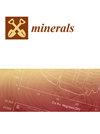Effect of Fine Particle Content on Solution Flow and Mass Transfer of Ion-Adsorption-Type Rare Earth Ores
IF 2.2
4区 地球科学
Q2 GEOCHEMISTRY & GEOPHYSICS
引用次数: 0
Abstract
Fine particle content significantly affects the in situ leaching of ion-adsorption-type rare earth ores. This study investigated the effect of fine particle content on solution flow and mass transfer in leaching. The results showed that with the increase in fine particle content, the peak concentration and peak time of rare earth increased. When the fine particle content exceeded 20%, all ion-exchangeable-phase rare earth ions could be replaced with a low dosage of the leaching solution. The leachate flow rate exhibited multi-stage variation, influenced by solution permeation, ion exchange, and fluctuations in accumulated liquid height. A mass transfer analysis showed that a higher fine particle content corresponded to a smaller plate height and a larger plate number of theoretical plates. As fine particle content increased, the final rising height of capillary water decreased, with rising rates varying across different stages for the samples. Moreover, an increase in fine particle content from 5% to 20% resulted in a 94% decrease in the samples’ permeability coefficients. A mechanism analysis showed that when the fine particle content was higher, the fine particles were embedded in the gaps between coarse particles, and the ore particles in the sample were arranged continuously, resulting in a lower permeability coefficient. Then, the leaching solution could penetrate uniformly, which was beneficial for reducing leaching blind spots and improving leaching efficiency. However, excessive fine particle content might have detrimental effects. Based on these results and considering actual mining conditions, the optimal fine particle content for rare earth leaching is 20%.细颗粒含量对离子吸附型稀土矿溶液流动和传质的影响
细颗粒含量对离子吸附型稀土矿的原位浸出有很大影响。本研究探讨了细颗粒含量对浸出过程中溶液流动和传质的影响。结果表明,随着细颗粒含量的增加,稀土的峰值浓度和峰值时间也随之增加。当细颗粒含量超过 20% 时,所有离子交换相稀土离子都能被低剂量的浸出液所取代。受溶液渗透、离子交换和积液高度波动的影响,浸出液流速呈现多级变化。传质分析表明,细颗粒含量越高,理论板的板高越小,板数越多。随着细颗粒含量的增加,毛细管水的最终上升高度降低,不同阶段样品的上升速率各不相同。此外,细颗粒含量从 5% 增加到 20% 时,样品的渗透系数降低了 94%。机理分析表明,当细颗粒含量较高时,细颗粒嵌入粗颗粒之间的空隙中,样品中的矿石颗粒连续排列,导致渗透系数降低。这样,浸出液就能均匀渗透,有利于减少浸出盲区,提高浸出效率。但是,细颗粒含量过高可能会产生不利影响。根据上述结果并考虑到实际采矿条件,稀土沥滤的最佳细颗粒含量为 20%。
本文章由计算机程序翻译,如有差异,请以英文原文为准。
求助全文
约1分钟内获得全文
求助全文
来源期刊

Minerals
MINERALOGY-MINING & MINERAL PROCESSING
CiteScore
4.10
自引率
20.00%
发文量
1351
审稿时长
19.04 days
期刊介绍:
Minerals (ISSN 2075-163X) is an international open access journal that covers the broad field of mineralogy, economic mineral resources, mineral exploration, innovative mining techniques and advances in mineral processing. It publishes reviews, regular research papers and short notes. Our aim is to encourage scientists to publish their experimental and theoretical results in as much detail as possible. There is no restriction on the length of the papers. The full experimental details must be provided so that the results can be reproduced.
 求助内容:
求助内容: 应助结果提醒方式:
应助结果提醒方式:


